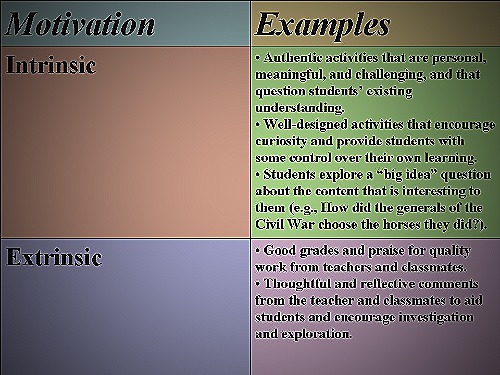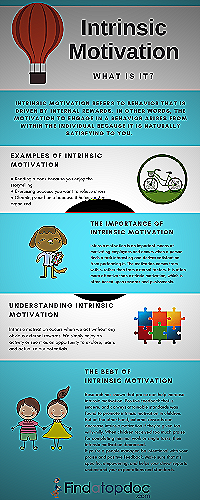Examples of Extrinsic Motivation in 2023
Are you struggling to keep your employees motivated? Do you want to create a work environment that promotes employee engagement?
Look no further than examples of extrinsic motivation. Extrinsic motivation is a type of motivation driven by external rewards, such as money, grades, or recognition.
In this article, we will explore examples of extrinsic motivation and how they can be used to foster employee engagement.
Check out this Youtube video: “Extrinsic vs Intrinsic Motivation” to learn about the importance and benefits of extrinsic motivation in various categories, including employee engagement and remote work.
Extrinsic Motivation’s Significance in the Workplace
Extrinsic motivation plays a significant role in employee engagement and productivity in the workplace. Employees who feel recognized and rewarded for their performance are more likely to be motivated to continue their good work.
Examples of extrinsic motivators that employers can use include bonuses, promotions, and public recognition.
Another example of extrinsic motivation in the workplace is negative consequences in response to poor performance. These consequences can help to motivate employees to improve their productivity and avoid poor results.
Examples of negative consequences that can be used include reprimands and financial penalties.
Employers who use extrinsic motivation effectively can create a work environment that fosters high levels of employee satisfaction and engagement. By rewarding positive behavior and holding employees accountable for poor performance, employers can create a culture of productivity and success.

Examples of extrinsic motivation in the workplace can include incentives such as bonuses, pay raises, promotions, and public recognition. These rewards can be especially effective in motivating employees to perform at their best, particularly when they are tied to clearly defined goals and objectives.
However, it is important for employers to recognize that extrinsic motivation alone is not enough to drive long-term results. To truly engage employees and drive lasting success, employers must also focus on intrinsic motivation, which is driven by internal rewards such as personal growth and development.
In conclusion, extrinsic motivation plays an important role in driving employee engagement and productivity in the workplace. By using rewards and accountability measures effectively, employers can create a culture of success that fosters productivity, satisfaction, and success.
Understanding Extrinsic Motivation
Extrinsic motivation is a type of motivation that comes from outside oneself. It is motivation that involves a reward or incentive.
Unlike intrinsic motivation, which comes from within and is driven by personal fulfillment or satisfaction, extrinsic motivation is driven by the expectation of some external reward.
Many jobs use extrinsic motivation in the form of compensation. For example, employees may be rewarded with a salary, bonuses, or other financial incentives for their work.
Other examples of extrinsic motivation in the workplace include promotions, public recognition, and increased authority or responsibility.
Examples of Extrinsic Motivation in the Workplace
There are various examples of extrinsic motivation in the workplace. One common example is employee bonuses.
Companies may offer bonuses to employees who meet certain performance goals or exceed expectations. This can be a powerful motivator and can encourage employees to work harder and perform better.
Another example of extrinsic motivation in the workplace is salary increases. Companies may offer periodic salary increases for employees who meet certain performance metrics, such as increased sales, improved customer satisfaction, or reduced errors.
How to Use Extrinsic Motivation in the Workplace
Employers can use extrinsic motivation as an effective tool for encouraging desirable behavior and outcomes in the workplace. However, it’s important to use extrinsic motivation in a fair and consistent manner, and to avoid negative consequences.
To use extrinsic motivation effectively, employers should align rewards with positive behaviors and ensure that negative consequences are fair and consistent. It’s also important to recognize and reward teamwork, collaboration, and effective communication.
By doing so, employers can motivate employees to not only achieve individual goals but also help build a better team.
The Importance of Extrinsic Motivation in the Workplace
Extrinsic motivation is important in the workplace because it can be an effective tool in modifying behavior. By offering rewards or incentives, employers can encourage employees to work harder and perform better.
This can lead to increased productivity and improved business performance.
Additionally, extrinsic motivation can help improve employee engagement and job satisfaction. When employees feel that their work is valued and appreciated, they are more likely to be motivated and engaged in their work.
This can lead to a more positive and productive workplace culture.
Examples of Extrinsic Motivation in Action
There are many examples of extrinsic motivation in action. One common example is employee referral programs.
Companies may offer incentives, such as cash bonuses or gift cards, to employees who refer successful new hires to the company. This not only motivates employees to participate in recruiting efforts but also helps the company find high-quality talent.
Another example of extrinsic motivation in action is sales incentives. Companies may offer bonuses or other rewards to salespeople who meet or exceed their sales quotas.
This can motivate salespeople to work harder and close more deals, leading to increased revenue for the company.
Examples of Extrinsic Motivation in Workers’ Compensation
Extrinsic motivation plays a crucial role in Workers’ Compensation by encouraging injured employees to return to work as soon as possible. This type of motivation is driven by rewards and benefits that come from outside oneself.
Return-to-Work Bonus
Employers can use a Return-to-Work Bonus as an extrinsic motivator for their injured employees. This bonus is given to individuals who come back to work before their scheduled date of return.
This type of compensation shows appreciation for the employees‘ dedication and encourages a faster return to work.
Public Recognition
Public recognition is another extrinsic motivator that can be used in Workers’ Compensation. Employers can recognize employees for maintaining a strong focus on safety while on the job.
This recognition can be in the form of an award, certificate, or a simple verbal recognition to boost employee morale.

Employee Incentive Programs
Employee Incentive Programs can encourage injured employees to return to work as soon as possible. These programs can offer valuable incentives, such as extra paid time off, bonuses, or monetary compensation.
These incentives provide a tangible reward for their hard work and motivate them to achieve their goals.

Team Building Activities
Team building activities are often used as extrinsic motivation strategies in Workers’ Compensation. These activities provide a fun way for employees to focus on their goals and build stronger relationships with their coworkers.
By participating in these activities, employees are motivated to continue working and build a stronger team.

Conclusion
Extrinsic motivation is crucial in Workers’ Compensation to encourage injured employees to return to work as soon as possible. Return-to-Work Bonuses, Public Recognition, Employee Incentive Programs, and Team Building Activities are great examples of extrinsic motivators that can be used to achieve this goal.
Examples of Extrinsic Motivation in Remote Work
Remote work has become increasingly popular in recent times, but it brings unique challenges to employee engagement and motivation. It’s important for employers to understand how to apply extrinsic motivation techniques to keep employees engaged and productive.
Rewards and Incentives
One of the most effective ways to provide extrinsic motivation in remote work is by using rewards and incentives. For example, employers can offer bonuses or promotions for those who complete tasks in a given timeframe or achieve certain milestones.
Creating healthy competition among employees can also be a useful way to motivate them while working remotely.
Recognition and Feedback
Remote workers often miss out on the personal interaction that typically occurs in a physical office setting, and this can impact their motivation and productivity. Employers should provide regular feedback and recognition to remote workers to help them feel connected and valued.
Recognition can be in the form of public acknowledgement or rewards, like free lunch vouchers. This recognition can act as a morale booster and also motivate employees to strive for better performance.

Potential Pitfalls of Extrinsic Motivation
While extrinsic motivation can be effective in some cases, it can also have negative side effects if not done properly. One potential pitfall is that individuals may focus on rewards at the expense of their work.
Additionally, extrinsic motivation can lead to toxic competition, where employees are not working together but instead focused on their individual rewards.

- Individuals may prioritize rewards over work: One problem with extrinsic motivation is that individuals may focus solely on the rewards and lose sight of the work itself.
- Toxic competition: Extrinsic motivation can pit employees against each other instead of collaborating. This can be counterproductive and lead to a toxic work environment.
- Short-term thinking: Extrinsic motivation typically involves external rewards, like money or promotions. While these rewards can be motivating, they can also create a shorter-term view of success rather than a long-term perspective.
- Reduced creativity and innovation: Depending solely on extrinsic motivation can stifle creativity and innovation as individuals may focus on meeting the goal to receive the reward, instead of exploring other possibilities.
- Loss of intrinsic motivation: Extrinsic motivation can also lead to the erosion of enjoyment in tasks that were previously intrinsically pleasing. When people receive extrinsic rewards for activities, they become less interested and enthusiastic about the task if the rewards are removed.
Examples of Extrinsic Motivation
Extrinsic motivation is a type of motivation that is driven by external rewards. These can be tangible, such as money or grades, or intangible, such as praise and recognition.
Examples of extrinsic motivation include:
- Competing in sports for trophies or medals
- Completing work for money or promotions
- Customer loyalty discounts
- Buy one, get one free promotions
- Being given a bonus for exceeding sales targets
In organizational behavior, extrinsic motivation plays a crucial role in determining the actions and behavior models of a company’s employees. In every organization or company, employees are extrinsic ally motivated by the compensation they receive for their work.
However, salary is not the only form of extrinsic motivation. Employees can also be motivated by rewards such as bonuses, promotions, flexible schedules, and more.
Extrinsic motivation is important because it can be an effective tool in behavior modification. The prospect of receiving external rewards or recognition can motivate an individual to change their behavior and strive for superior performance.
However, it is crucial that extrinsic motivation is handled carefully. Employers should ensure that extrinsic rewards align with positive behaviors such as teamwork, collaboration, and communication.
They should also ensure that negative consequences are enforced in a fair and consistent manner to avoid any toxic competition.


